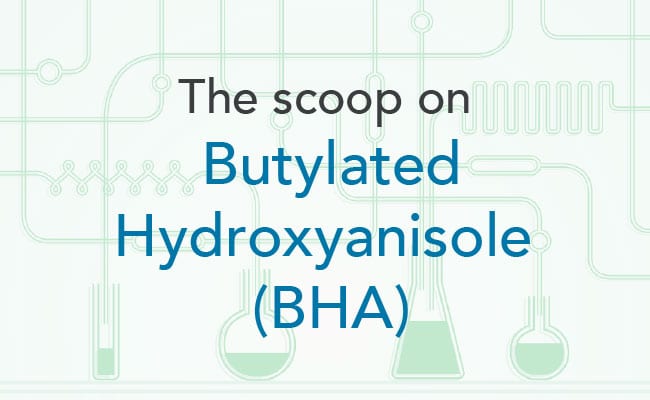
What is butylated hydroxyanisole (BHA)?
Butylated hydroxyanisole (BHA) is a synthetically produced preservative used to keep fats and oils in personal care products and foods from going rancid.
What products is butylated hydroxyanisole (BHA) in?
BHA is in cosmetics like lip glosses and lotions, personal care items, as well as food items like preserved meats or chips, edible fats, dehydrated foods, baked goods, snack foods, chewing gum, animal feed, and foods that contain fats as well as flavoring products [1] [3]. It is also in food packaging, rubber, and petroleum products [1].
How to tell if a product has butylated hydroxyanisole (BHA)
Look for butylated hydroxyanisole or BHA on the labels [2].
Risks associated with butylated hydroxyanisole (BHA)
BHA mimics the hormone estrogen and as such, the International Agency for Research on Cancer as well as the National Toxicology Program have classified these substances as possible and/or likely human carcinogens. Humans can absorb BHA from foods as well as through the skin when cosmetics products like lip glosses or lotions contain it as a preservative [1] [3]. As an endocrine disrupter BHA can cause any of the following to occur:
- Lower testosterone levels
- Lover thyroxin levels
- Adversely affect sperm quality [3]
- Behavioral problems in children [2]
How to avoid butylated hydroxyanisole (BHA)
Read labels on food and cosmetics products to avoid butylated hydroxyanisole and BHA[1]. Instead look for toxic chemical free personal care options by using EWG’s Skin Deep Database. Choose whole foods rather than foods that contain preservatives like BHA.
References:
[1] Healthy Child Healthy World (2013). Choose Foods and Cosmetics Made without BHA. Available online: http://www.healthychild.org/easy-steps/choose-foods-cosmetics-made-without-bha/ December 7, 2016.
[2] Healthy Child Healthy World (). Which Additives Make Kids Behave Badly? Available online: http://www.healthychild.org/which-food-additives-make-kids-behave-badly/ December 7, 2016.
[3] EWG (2014). EWG’s dirty dozen guide to food additives: generally recognized as safe — but is it? Available online: http://www.ewg.org/research/ewg-s-dirty-dozen-guide-food-additives/generally-recognized-as-safe-but-is-it December 7, 2016.



